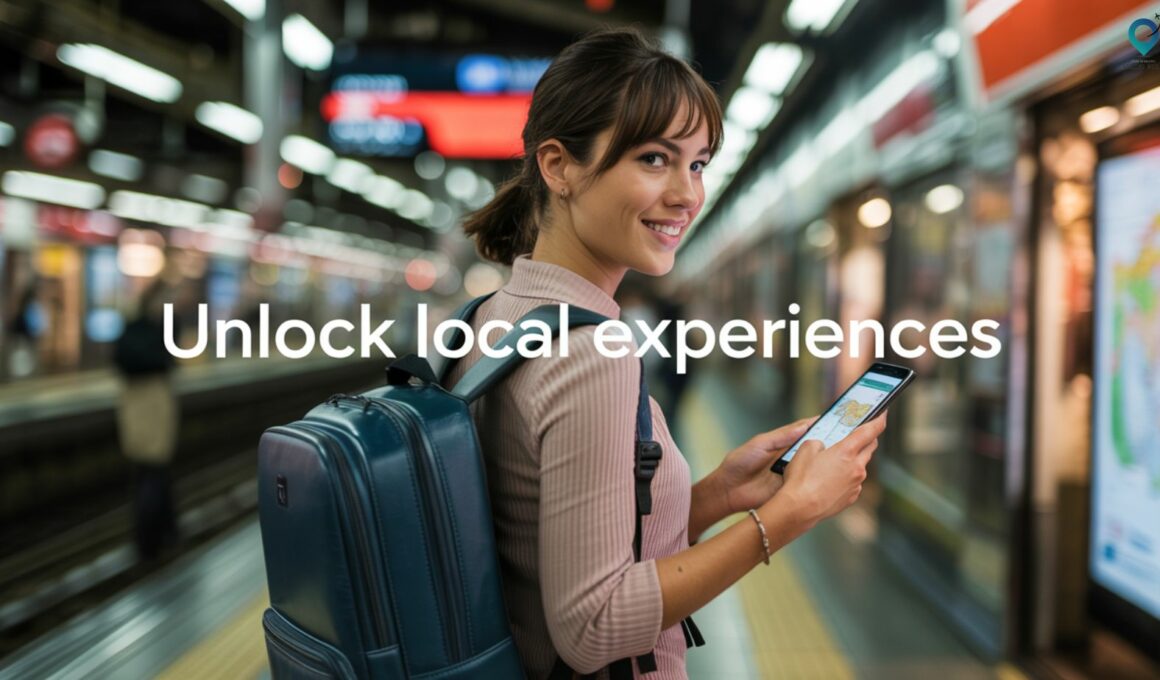How to Use Public Transport Like a Local in a New Country

Are you traveling to a new country and feeling unsure about how to use public transport there? Don’t worry—you’re not alone. I’ve been there too, standing at a metro station in a foreign city, trying to read signs in another language, wondering if I’m about to get on the right bus or head in the wrong direction completely.
Learning how to use public transport like a local in a new country can feel overwhelming at first. But here’s the good news—it’s much easier than you think, and it can actually be one of the most exciting parts of your trip.
Using public transportation in a foreign country isn’t just about saving money—it’s about seeing the city through the eyes of locals, blending in, and discovering hidden gems that tourists often miss. Whether you’re hopping on a tram, catching a bus, or navigating a subway system, this guide will give you the confidence to move around like a pro.
So, if you’re ready to explore smart, skip the tourist traps, and travel like a local, these 7 easy tips will help you master public transport in any new city around the world.
1. Learn About the Transport System Before You Arrive

Before you even land in a new country, take some time to understand how the public transport system works there. Every city has its own way of running things—some rely heavily on metros, while others may use buses, trams, or even ferries.
Start by checking:
- What types of public transport are available (bus, metro, tram, etc.)
- Whether there’s a travel pass for tourists or unlimited ride cards
- The average fare prices and if tickets can be bought online or via apps
- Whether public transport runs late at night or only during the day
A little research before your trip can save you time, confusion, and even money once you arrive. You can find most of this information on the official transport websites of the city or country you’re visiting—or simply by watching YouTube videos and reading travel blogs from recent visitors.
By understanding the local transit system in advance, you’ll feel more confident and ready to move around like a local from the moment you land.
This post is for photography lovers: –
Mastering Travel Photography: 20 Professional Tips for Stunning Shots
10 best Cameras for travel photography
2. Use Transit Apps to Plan Your Route

One of the easiest ways to travel like a local in a new city is by using transit apps. These apps help you find the best route, track buses or trains in real time, and even show how long it takes to walk between stops.
Some of the best public transport apps for travelers include:
- Google Maps – Works in most countries and shows step-by-step directions
- Citymapper – Great for big cities like London, New York, and Berlin
- Moovit – Offers live updates and local travel tips
- Rome2Rio – Helps plan longer trips between cities using multiple transport modes
Make sure to download these apps before your trip, and if possible, save your routes or maps offline in case you don’t have internet access while traveling.
Using public transport in a foreign country becomes so much easier when your phone helps you figure out which platform to go to, when your train is arriving, and even what exit to take at the station. With the right app, you’ll feel like you’ve lived there for years—even if it’s your first day.
3. Understand the Ticket System

Every country—and sometimes every city—has a different way of handling tickets, so it’s important to understand how it works before you hop on a bus or train.
Here are a few key things to check:
- How to buy tickets: Can you use cash, a card, or a mobile app? Are there ticket machines or counters at stations?
- Types of tickets: Are there single-ride tickets, day passes, or tourist passes? Some cities offer unlimited ride passes that save you money if you’re using public transport often.
- Validation rules: In many countries (like Germany or Italy), you must validate your ticket before or after boarding. Forgetting to do this could lead to a fine—even if you paid for the ticket!
- Contactless travel: Some cities let you tap your credit/debit card or use a digital wallet (like Apple Pay or Google Pay) directly at turnstiles or on buses.
If you’re unsure, ask someone at the station or watch what locals are doing. Also, many apps show you the fare and payment method for each trip.
Understanding the public transport ticket system helps you avoid mistakes and makes your journey smoother, faster, and stress-free.
4. Avoid Rush Hour if You Can

If you’re new to a city, one of the best ways to reduce stress while using public transport is to avoid peak commuting hours. These are the busiest times of the day, usually when locals are heading to or from work or school.
When is Rush Hour?
- Morning: Between 7:30 AM and 9:30 AM
- Evening: Between 5:00 PM and 7:00 PM
Why should you avoid it?
Because during these hours:
- Trains and buses are overcrowded: You may not get a seat—or even space to stand comfortably. For example, in Tokyo or London, metro trains can be packed shoulder-to-shoulder during rush hour.
- More chance of getting lost or overwhelmed: With the crowd pushing in different directions, it’s harder to read signs or figure out where you’re going—especially if it’s your first time in the system.
- Less help available: People are in a hurry to get to work and may not have time to stop and help if you have questions.
- You might miss your stop: It’s harder to see station names or hear announcements in a packed space.

If your travel schedule is flexible (and it often is for tourists), plan your trips:
- Mid-morning (10 AM–12 PM)
- Early afternoon (1 PM–4 PM)
These are off-peak times. You’ll find fewer people, more space, and a more relaxed experience. You can even ask for help if needed, take photos, or simply enjoy the ride without feeling rushed or squeezed.
Imagine you’re in Paris. If you take the metro at 8 AM from Gare du Nord, you’ll be packed in with hundreds of commuters heading to offices. But if you travel at 10:30 AM instead, the train is half-empty, and you’ll have time to read signs, listen to announcements, and enjoy the city views.
Check This out:- How to Apply for a Tourist Visa Quickly
Visa-free countries for US Passport Holders
5. Learn a Few Local Phrases

When you’re in a new country, even knowing just a few basic local phrases can make your public transport experience much smoother. You don’t need to be fluent—just learning a handful of helpful words or questions can make a big difference.
Why is this important?
- It helps you ask for help or directions if you’re confused.
- Locals are more likely to respond kindly when you try speaking their language.
- You’ll feel more confident navigating unfamiliar places.

Here are some examples that can be useful on buses, metros, or trains:
| English Phrase | Example in Local Context (Generic) |
| “Where is the bus stop?” | To find your stop in a busy city. |
| “How much is a ticket?” | To ask about fares at a counter or kiosk. |
| “Does this train go to [place]?” | To make sure you’re on the right route. |
| “Which platform for the metro?” | Helpful at larger train stations. |
| “Thank you,” / “Excuse, me” | Politeness goes a long way, especially in Europe or Asia. |
Tools to help:
- Google Translate: Use the app to translate signs or even have a quick voice conversation with a local.
- Phrasebook apps like Lonely Planet or Duolingo’s travel phrases section.
If you’re in Rome and unsure which bus goes to the Colosseum, you could politely ask, “Quale autobus va al Colosseo?” Even if your pronunciation isn’t perfect, locals will appreciate the effort and are more likely to help.
Write down the most useful phrases on a small card or save them on your phone for easy access when you’re offline.
For Female Travellers:- Solo Travel For Women: What to Avoid Traveling Alone
6. Watch What Locals Do

When you’re in a new country and unsure of how things work on public transport, the best thing you can do is observe the locals. People who use the system every day know exactly what to do—and by watching them, you can avoid confusion or unintentional mistakes.
Why is this helpful?
- Every country has its own habits and unspoken rules on public transport.
- Locals can teach you things silently—like where to stand, when to board, and how to exit—just by watching them.
- It helps you avoid standing out as a confused tourist.
What to observe:
| What to Watch | Why It Matters |
| How people board | Do they enter through the front or back? In some places (like London buses), entry is only from the front. |
| How they pay | Are they tapping a card, scanning a phone, or showing a pass? Follow their lead. |
| Where they queue | In countries like Japan or Singapore, people form neat lines to board the train. |
| How they behave | Are they quiet? Listening to music? Eating is banned in some systems (like Singapore MRT). |
| Where they stand | People may stand on one side of the escalator and walk on the other—usually right in London, left in Tokyo. |
Real-life example:
In Germany, buses often don’t stop unless you press the “stop” button in advance. You might not know this unless you notice locals doing it. If you wait for the driver to stop on his own—you may miss your stop!
Try not to panic if you’re unsure. Just step aside, take a moment, and quietly watch how others are doing it. Within a ride or two, you’ll feel much more confident.
7. Keep a Backup Plan Ready

Even with the best planning, things can go wrong—especially when using public transport in a new country. Delays, route changes, strikes, or even simple confusion can happen. That’s why it’s smart to always have a backup plan when you’re navigating an unfamiliar transit system.
Why do you need a backup?
- Services may be canceled or delayed unexpectedly (e.g., metro strikes in Paris or train delays in Italy).
- You might miss your stop or get on the wrong bus.
- Ticket machines may not work, or you may lose mobile data.
- Language barriers can sometimes prevent you from asking for help in the moment.
What should your backup plan include?
| Backup Strategy | What It Helps With |
| Save routes offline | Use Google Maps offline or screenshot directions for no-internet situations. |
| Know a few landmarks | If GPS fails, you can ask for help by referring to well-known places nearby. |
| Carry a local map or guidebook | Old-school, but reliable if your phone battery dies. |
| Have some cash on hand | Not all transport accepts cards—especially in rural or small towns. |
| Keep a taxi or ride-share app ready | Apps like Uber, Bolt, or Grab can be a quick rescue if you’re lost or stranded. |
Let’s say you’re in Istanbul, and the tram line shuts down due to a protest. If you’ve saved your walking route to the hotel or know how to call a taxi from your phone, you won’t panic—you’ll simply switch gears and keep moving.
Staying calm and having a Plan B gives you peace of mind and keeps your trip smooth, even when things don’t go perfectly. That’s how experienced travelers do it!
Final Tip
Stay curious, flexible, and open to learning as you travel. Public transport might feel overwhelming in a new country, especially with language differences or unfamiliar systems—but that’s part of the adventure. Don’t be afraid to make small mistakes; every traveler has missed a stop or boarded the wrong bus at some point.
What matters most is how you handle it—with patience, a smile, and a willingness to adapt. These moments often lead to the most memorable experiences. By using the tips in this guide, preparing ahead, and observing how locals move around, you’ll gain confidence quickly. Soon, hopping on a train or catching a bus in a foreign city will feel just as easy as it does at home.

Meet David Hoper, a passionate travel Blog writer with 7+ years of experience in travel content. Through his exemplary storytelling and engaging narratives, he shares his experiences and brings destinations to life. With a keen eye for detail and a love for exploration, he has cultivated a diverse portfolio of travel blogs that inspire and inform readers worldwide.








